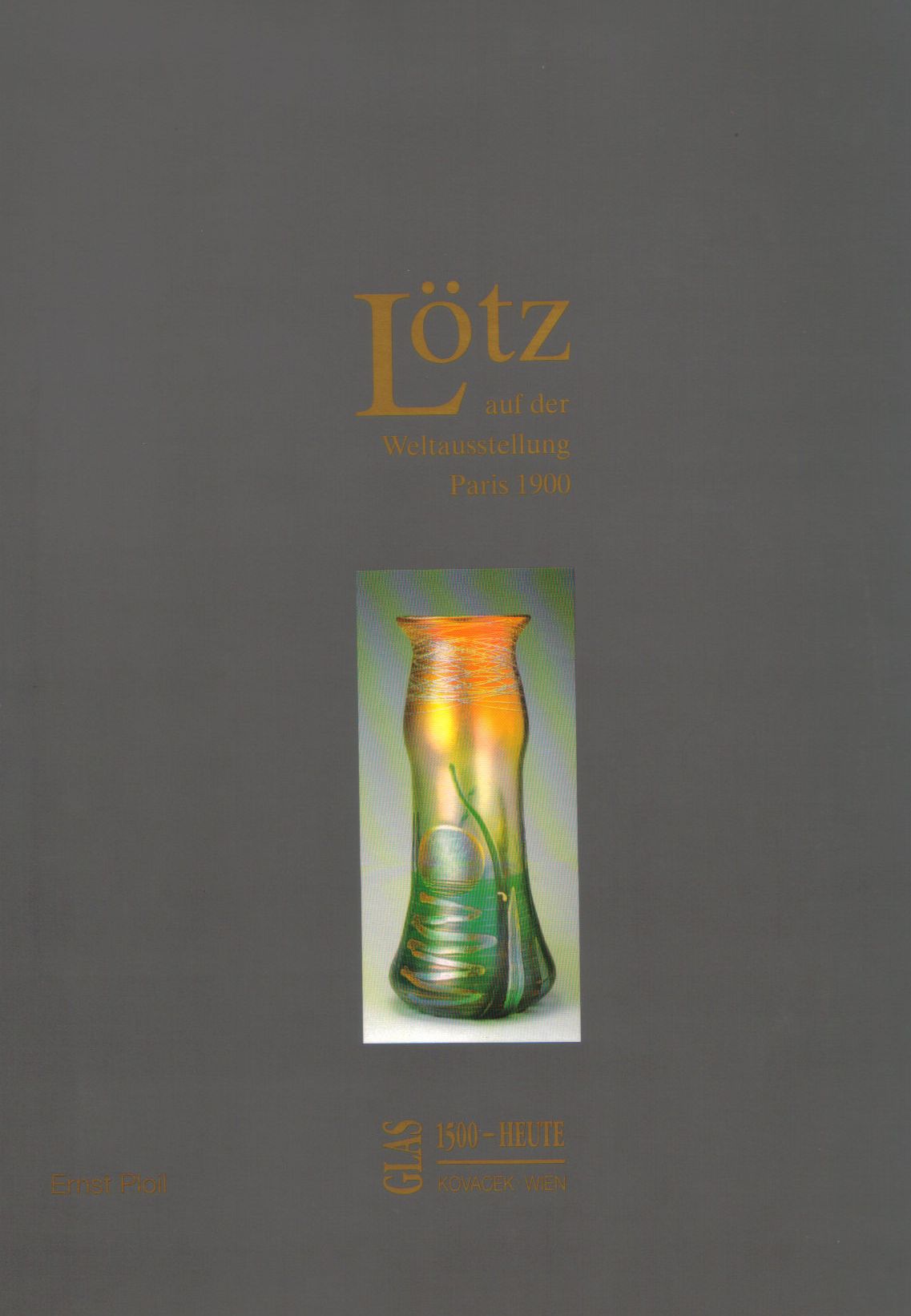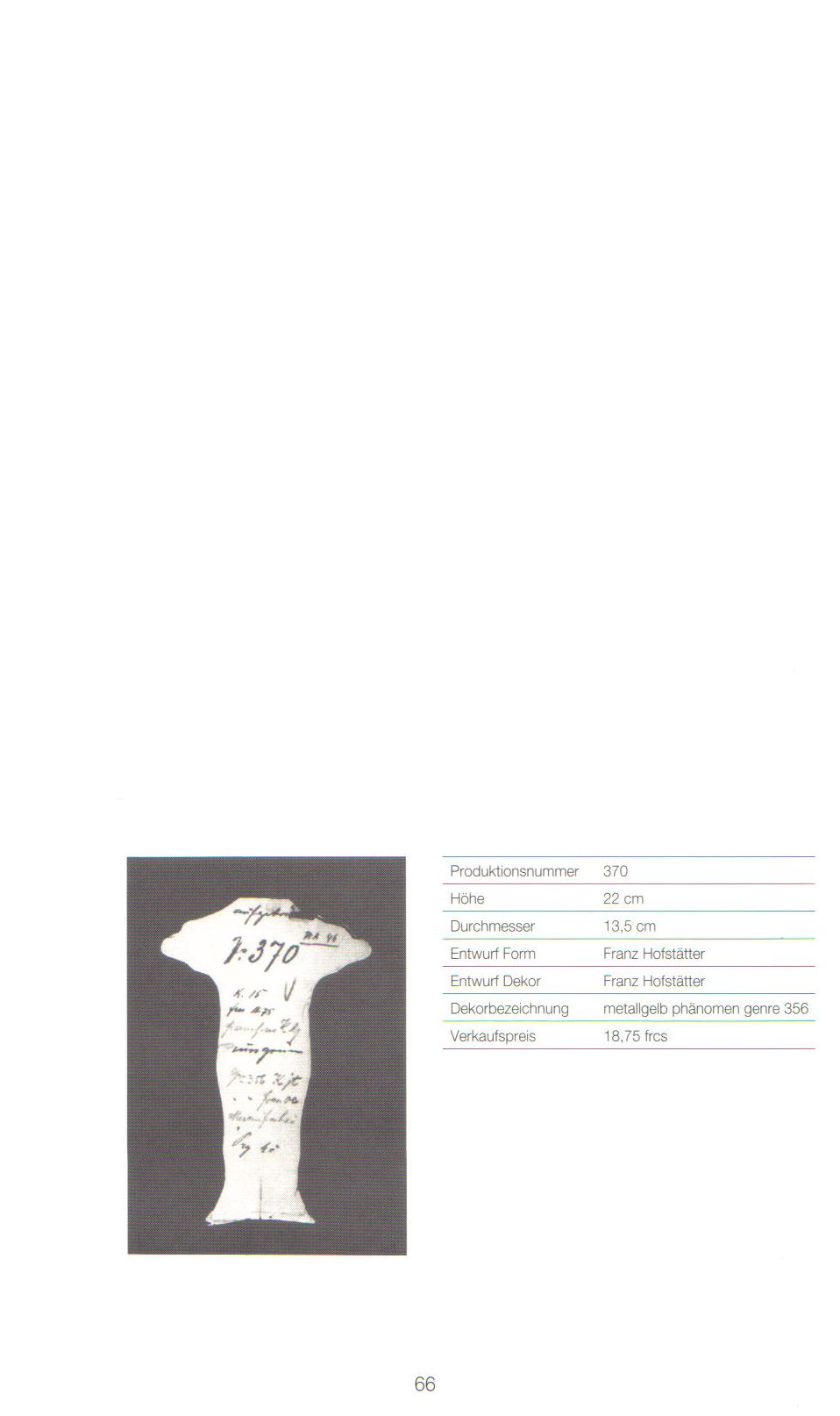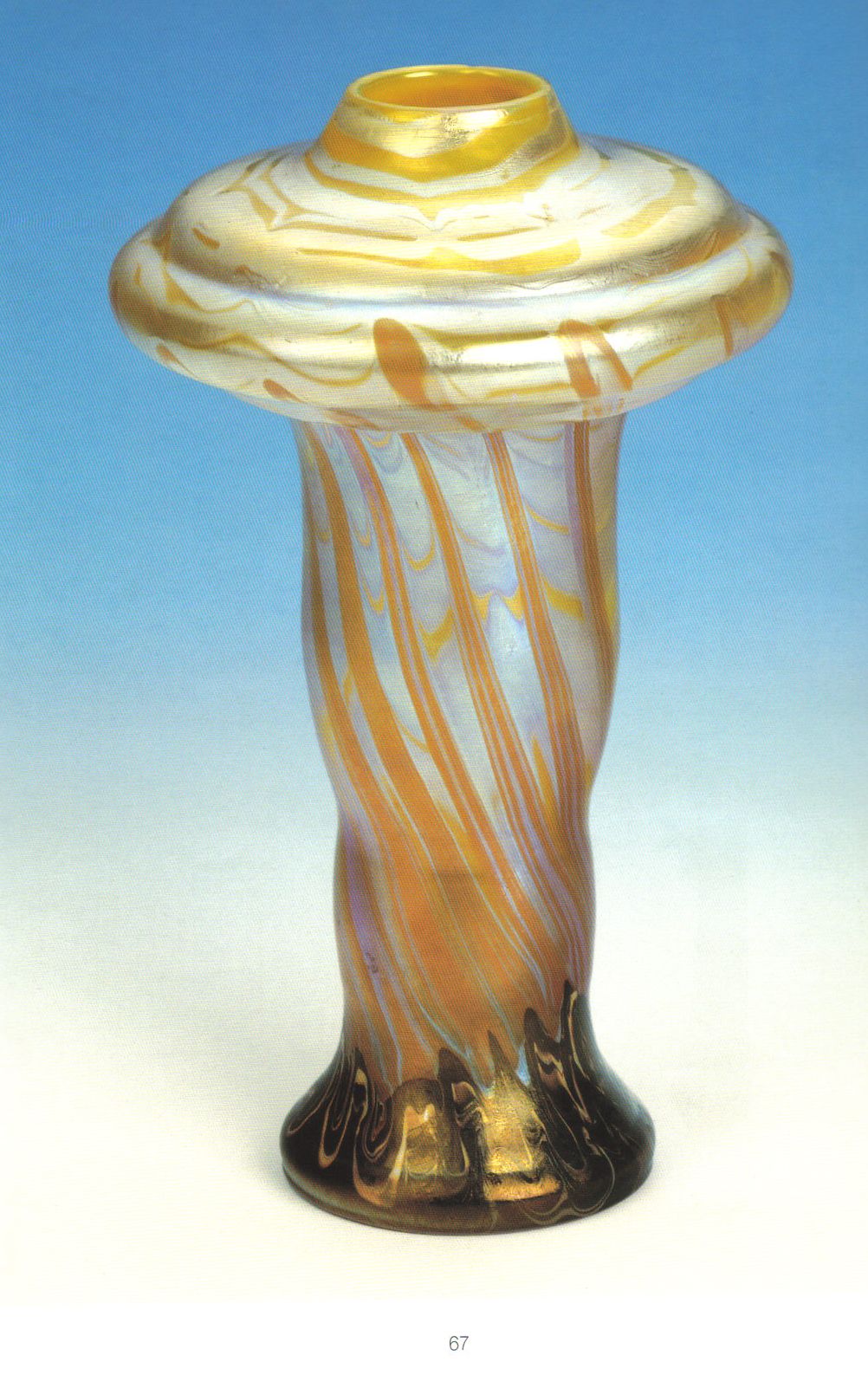Inscribed Loetz Austria
Exhibited:
Paris Exposition Universelle, 1900
Literature:
Dr. Ernst Ploil, Lötz at the World Exhibition Paris 1900, p.67, no.370
To prepare for the 1900 exhibition, Spaun had had his designers observe the pieces Lewis Comfort Tiffany had put on display throughout Europe. Initially, Loetz simply copied these pieces, especially the iridescent wares for which Tiffany was famous. However, as the Exhibition neared, Spaun realised the company would have to produce more than mere copies, and, to bring a new approach to the firm’s work, in 1899 he commissioned external artists to prepare designs. Among these artists was Franz Hofstätter (1871-1958).
Hofstätter was not a glass designer by trade, although in his training he had some experience in this area. He was a painter and best known for his designs for sacred interiors. He took up Spaun’s commission readily, though, and produced an incredible set of designs. Although the catalogue of the exhibition only credited him with the mosaics Loetz exhibited, it is now thought that he designed at least thirteen – and probably far more than that – of the vases the company showed. Since Hofstätter was not familiar with glass-designing, his collaboration with the director of the glasshouse, Eduard Prochaska, was crucial: Prochaska was responsible for looking over Hofstätter’s designings and determining if and how they could be produced by the glassmakers.
The pieces shown by Loetz at the Exhibition, including this vase, were of a style the company had called ‘Phänomen’. This referred to the surface decoration of glass threads in varying colours, pulled to create a feather-like appearance. This technique was patented by the company in 1898 and became a trademark of Loetz; they created a number of ‘genres’, each identified by a number. This vase is a Phänomen piece of Genre 356. This iridescent Phänomen ware is some of the most sought-after of their work today.
The Exhibition was a resounding success for the firm; Loetz won numerous awards, including the Grand Prix previously won by well-known makers like Tiffany and Gallé, and individual prizes were also awarded to Hofstätter and Prochaska. Hofstätter is not known to have designed for the company again; indeed, little else is known of his career, which likely returned to its previous path. However, the brief partnership between this elusive artist and the glass company resulted in some truly extraordinary pieces which continued to excite collectors in the decades that followed.


















